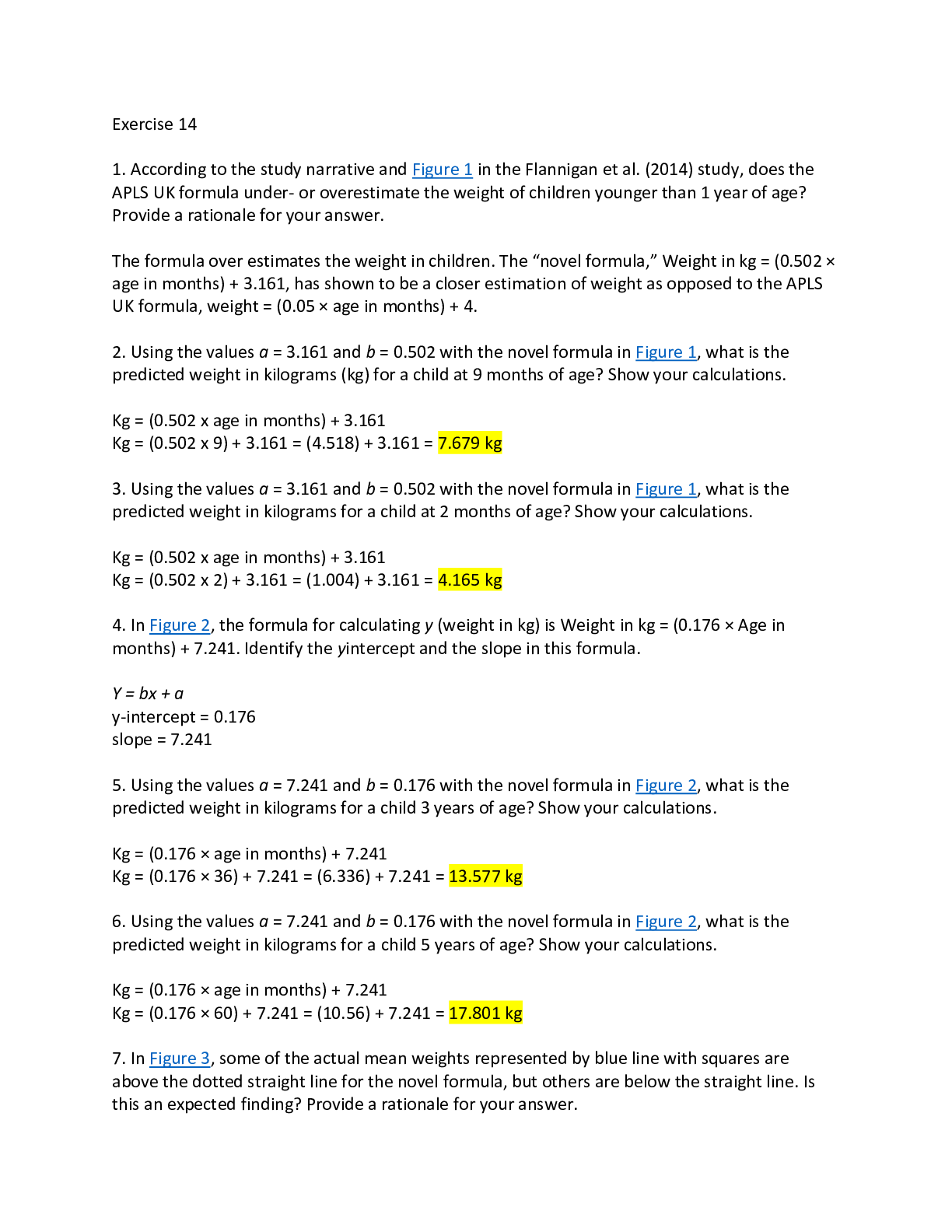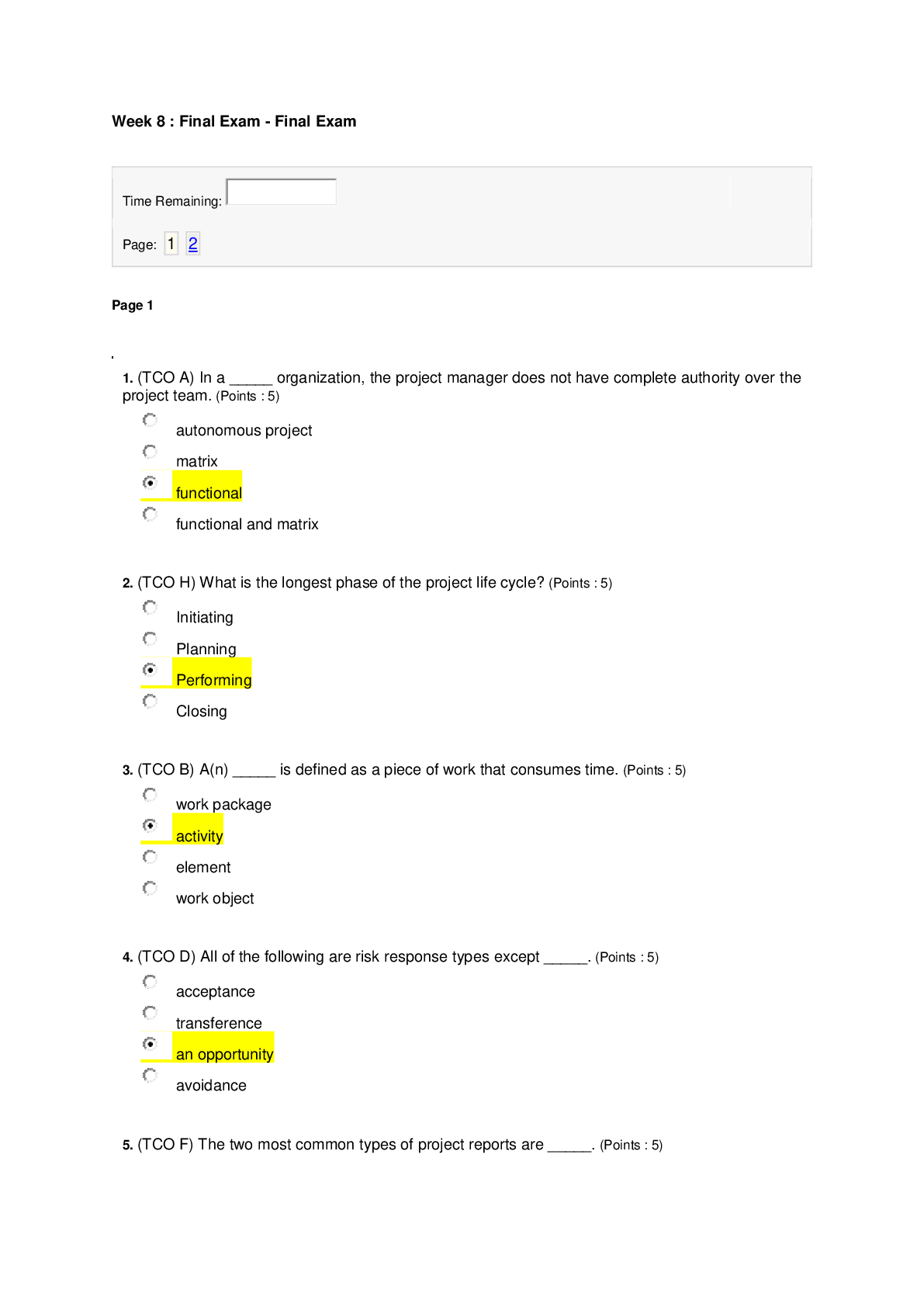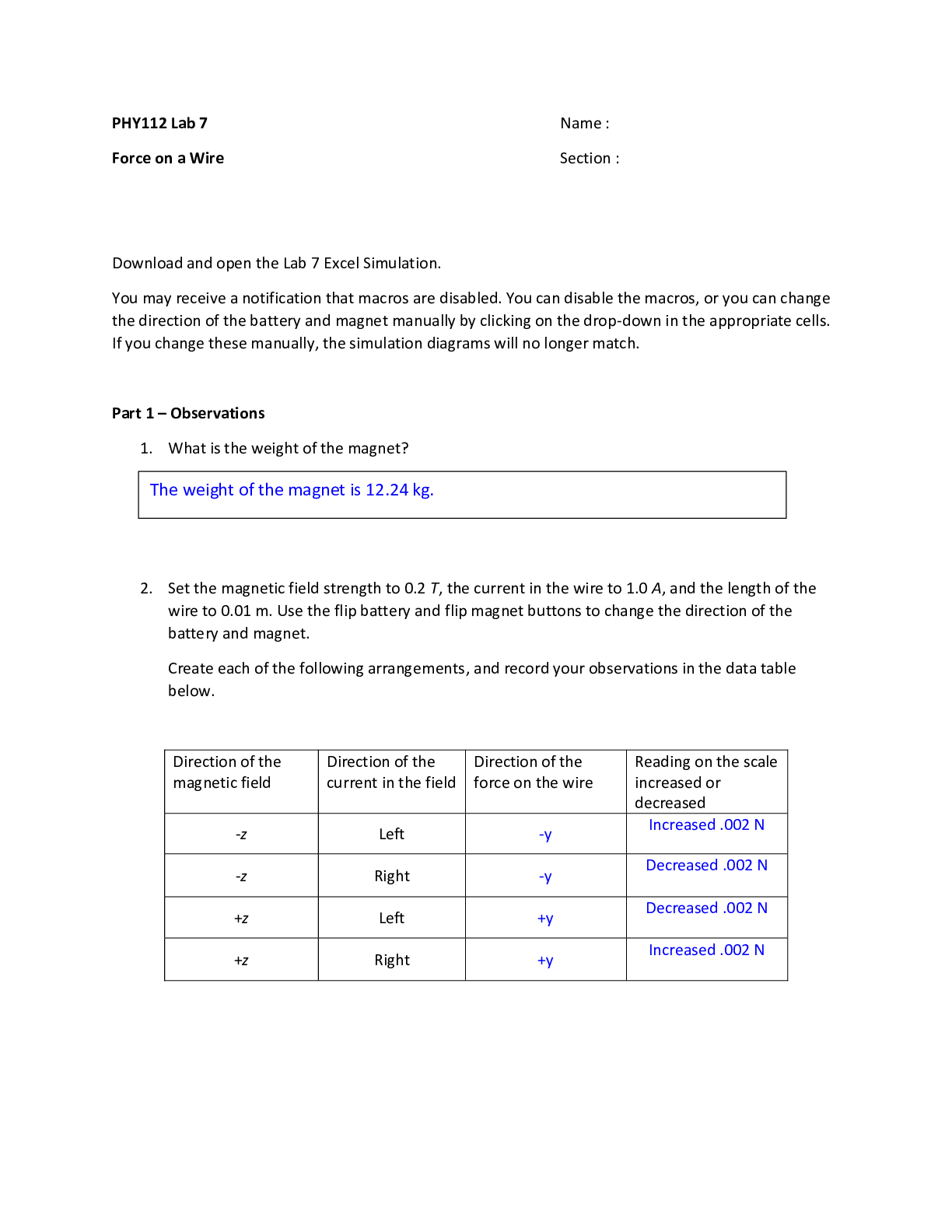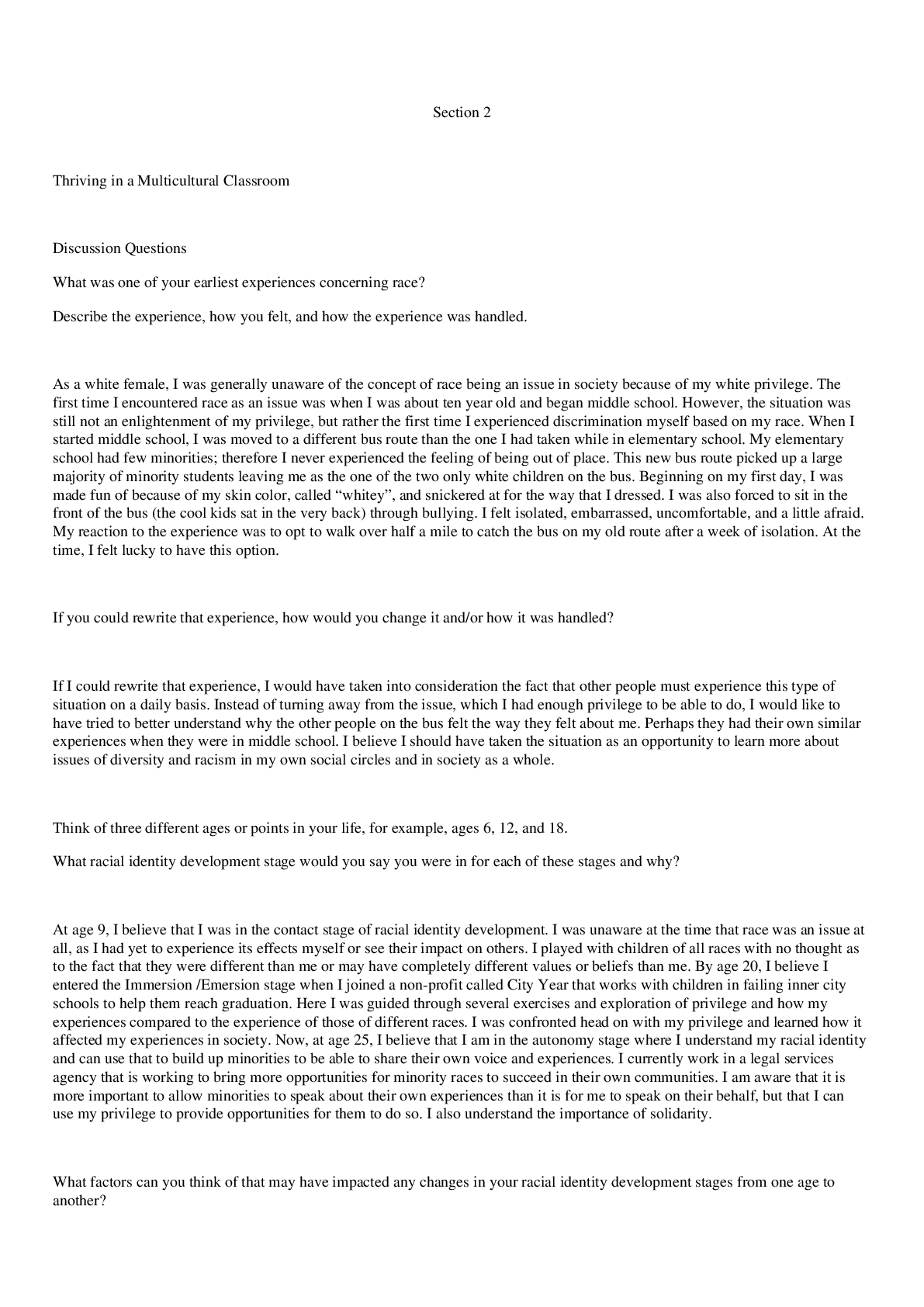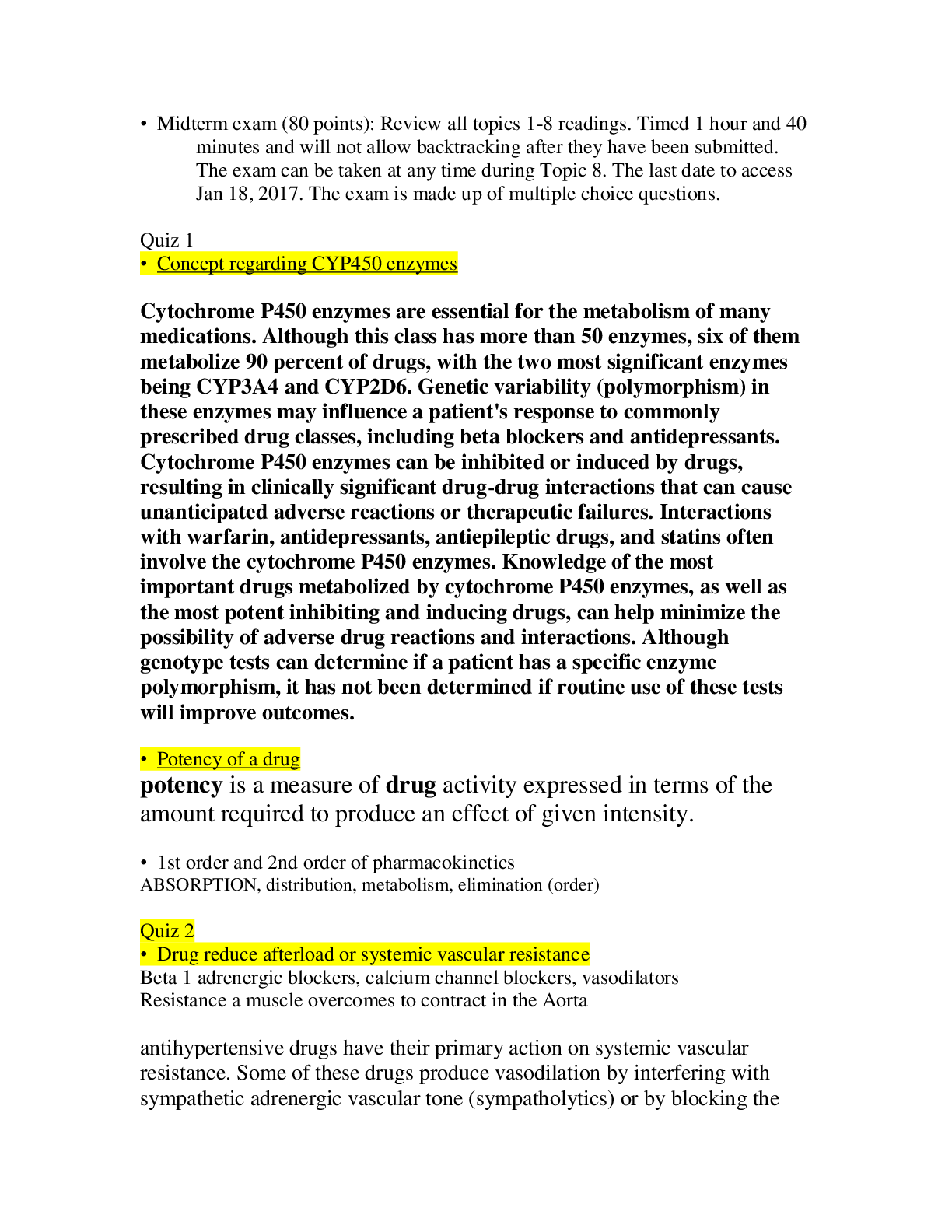*NURSING > STUDY GUIDE > ATIFundamentals practice exam spring (All)
ATIFundamentals practice exam spring
Document Content and Description Below
1. CHAPTER 1: HEALTH CARE DELIVERY SYSTEMS A. Components of Health care systems a. Participants 1. Consumers- clients 2. Providers a. Licensed providers: registered nurses, license practical (or ... vocational) nurses (LPN), advanced practice nurses (APN), medical doctors, pharmacists, dentists, dietitians, physical/respiratory/occupational therapists, etc b. Unlicensed providers: assistive personal b. Settings 1. Hospitals, homes, skilled nursing, assisted living, schools, etc c. Regulatory Agencies 1. US department of Health and Human Services 2. US Food and Drug Administration (FDA) 3. State and local public health agencies 4. State licensing boards a. Determines laws/regulations that govern nursing in their state b. ensure health care providers and agencies comply with state regulations c. Issue/revoke nursing license i. Nurses need a license in every state they practice in 5. Joint Commission (JCAHO) a. Set quality standards for accreditation of health care facilities 6. Professional Standards Review Organizations- monitor health care services provided d. Healthcare financing Mechanisms 1. Public federally funded programs a. Affordable Care Act (Obamacare) i. Increases access to healthcare for all individuals ii. Decreasing healthcare costs iii. Providing opportunities for uninsured to become insured at an affordable cost b. States Children’s Health Insurance i. Covers uninsured children up to 19 years old at a low cost to parents Key: - Most likely on test - Motivational quotes Downloaded by Ian Mbogo (ianshirow834@gmail.com) lOMoARcPSD|7822105 2 Don’t stop until you are proud c. MEDICARE MEDICAID Eligibility: >65 years old OR on disability for more than 2 years OR have ALS OR on dialysis Part A: inpatient hospital, limited skilled nursing care, home health care (hospital insurance) Part B: outpatient care, diagnostic services, OT/PT (medical insurance) Part C: combination of parts A and B, optional private insurance (Medicare advantage plan) Part D: prescription drugs (medications) Eligibility: low socioeconomic status, no insurance Federally and state funded Individual states determine eligibility requirements e. Levels of Health Care Preventative Focuses on educating and equipping clients to reduce or control risk factors for disease Primary Emphasizes health promotion and includes prenatal, well-baby care, family planning, nutrition counseling, disease control Secondary Diagnosis and treatment of acute illness and injury Tertiary Provision of specialized and highly technical care Restorative Intermediate follow-up care for restoring health and promoting selfcare Continuing Addresses long-term or chronic health care needs over a period of time 2. CHAPTER 2: THE INTERPROFESSIONAL TEAM A. Interprofessional Personnel (non-nursing) Spiritual Support Staff Provides spiritual care (pastors, rabbis, priests) Registered Dietitian Assess/plans for/educates regarding nutrition needs Laboratory technician Obtains specimens of body fluids, and performs diagnostic tests Occupational therapist Focuses on patient’s independence and regain activities of daily living (ADL) skills Pharmacist Provides and monitors meds Downloaded by Ian Mbogo (ianshirow834@gmail.com) lOMoARcPSD|7822105 3 Physical Therapist Focuses on increasing musculoskeletal function (especially lower extremities), to maintain mobility Provider Assess/diagnose/treat diseases or injury, includes doctors, APNs, physician’s assistant Radiologic technologist Positions client and performs x rays and other imaging procedures for providers to review for diagnosis of disorders of various body parts Respiratory therapist Evaluates respiratory status and provides respiratory treatments including oxygen including oxygen therapy, chest physiotherapy, inhalation therapy, and mechanical ventilation Social worker Works with clients and families by coordinating inpatient and community resources to meet psychosocial and environmental needs that are necessary for recovery and discharge Speech-language pathologist Evaluates and makes recommendations regarding the impact of disorders or injuries on speech, languages, and swallowing Ex: patient with dysphagiaà call speech pathologist for consult 3. CHAPTER 3: ETHICAL RESPONSIBILITIES A. Ethical Decision Making In Nursing a. Basic principles of ethics 1. Advocacy- support of client’s health, wellness, safety, privacy, and personal rights 2. Responsibility- willingness to respect obligations and follow through on promises 3. Accountability- ability to answer for one’s own actions 4. Confidentiality- protection of privacy without diminishing access to high-quality care b. Ethical Principles for client care Autonomy The right to make one’s own personal decisions, even when those decisions might not be in that person’s best interest (ex: Jehovah’s witnessblood transfusion) Beneficence Action that promotes good for others, without any self interest Fidelity Fulfillment of promises Justice Fairness in care delivery and use of resources Nonmaleficence A commitment to do no harm Veracity Commitment to tell the truth c. Ethical Dilemma 1. Problems that involve more than one choice and stem from differences in values and beliefs of the decision maker a. A problem is an ethical dilemma when: i. There is not enough scientific data to solve it ii. It conflicts between 2 moral imperatives iii. Answer will have a profound effect on the situation and the client 2. When making an ethical decision: Downloaded by Ian Mbogo (ianshirow834@gmail.com) lOMoARcPSD|7822105 4 a. Identify if the issue is an ethical dilemma, gather as much relevant info as possible, reflect on own values, list and analyze all possible options, select correct option, apply it to situation Don’t stress. Do your best. Forget the rest. 4. LEGAL RESPONSIBILITIES A. Sources of Law a. Federal regulations 1. Health Insurance Portability and Accountability Act (HIPPA) 2. Americans with Disabilities Act (ADA) 3. Mental Health Parity Act (MHPA) 4. Patient Self-Determination Act (PSDA) b. Criminal and civil laws 1. Criminal law- relates to the relationship between an individual and the government 2. Civil law- protect individual rights (ex: tort law) c. State laws d. Licensure B. Types of Torts a. Unintentional torts 1. Negligence a. nurse fails to implements safety measured for a client at risk for falls (ex: bed alarm) b. 5 elements necessary to prove negligence i. Duty to provide care as defined by a standard ii. Breach of duty by failure to meet standard iii. Foreseeability of harm iv. Breach of duty has potential to cause harm v. Harm occurs 2. malpractice a. nurse admins a large dose of meds due to a calculation error and client gets hurt b. Intentional torts 1. Assault- threat 2. Battery- acting on the threat Downloaded by Ian Mbogo (ianshirow834@gmail.com) lOMoARcPSD|7822105 5 3. False imprisonment a. A person is confined or restrained against his will; inappropriate use of restraints and sedatives C. Informed consent a. Legal process by which a client or the client legally appointed designee has given written permission for a procedure or treatment b. Provide should explain (needs to be in clients primary language- interpreter may be needed): 1. Reason the patient needs procedure or treatment 2. How the procedure/treatment will benefit the client 3. The risks involved if the client receives the procedure/treatment 4. Other options to treat the problem c. Nurses role: 1. Witness patient’s informed consent signature 2. Notify provider if they have more questions d. Individuals may grant consent for another person if they are: 1. Parent of a minor 2. legal guardian 3. court specified representative 4. individual has durable power of attorney authority for health care e. Refusal of treatment 1. Notify provider, patient signs a document indicating understanding of risks D. Advanced Directives a. Living will- legal document that expresses client’s wishes regarding medical treatment in the event the client becomes incapacitated and is facing end of life issues b. Durable power of attorney for health care- document in which clients designates health care proxy to make health care decisions for them if they are unable to do so c. Providers orders- unless there is DNR or AND in the clients medical record, the nurse will initiate CPR E. Mandatory reporting a. Abuse- nurses must report any suspicion of abuse (child, elderly, or domestic abuse) b. Communicable disease c. Impaired coworker (drinking, drugs) 1. Do not talk directly to them 2. Do not gather more information 3. Report the suspicion 5. INFORMATION TECHNOLOGY Downloaded by Ian Mbogo (ianshirow834@gmail.com) lOMoARcPSD|7822105 6 A. Documentation a. Elements of documentation 1. Subjective data- direct quotes or summarize information as the client’s statement 2. Objective data- what the nurse sees, hears, feels, and smells; NO OPINIONS b. Legal guidelines 1. Begin with date and time; write legibly, do not leave blank spaces; do not use correction fluid, erase, scratch out or blacken out errors, sign all documents with name and title B. Reporting formats a. Change of shift report b. Telephone reports 1. Try to have another RN there to listen in on phone call 2. Read back order to the provider 3. Provider signs order off within 24 hours c. Transfer (hand off) reports d. Incident reports 1. Document facts without judgement or opinion 2. Do not refer to an incident report in a client’s medical record C. Information security a. HIPPA (health insurance portability and accountability act of 1996 1. Only health care team members directly responsible for a client’s care may access that client’s record 2. Clients have a right to read and obtain a copy of their medical record 3. Staff must keep medical records in a secure area to prevent inappropriate access to the info 4. Electronic records are password-protected 5. Nurses must not disclose unauthorized individuals or family members 6. Nurses must not disclose client’s info to unauthorized individuals or family members a. Many hospitals use a code system 6. DELEGATION AND SUPERVISION A. Delegation a. RN cannot delegate 1. Patient education 2. task that needs nursing judgement 3. Nursing assessment RN to LPN RN to CNA Downloaded by Ian Mbogo (ianshirow834@gmail.com) lOMoARcPSD|7822105 7 Monitoring findings Reinforce patient teaching Tracheostomy care Suctioning Checking NG tube patency Administering enteral feedings Inserting a urinary catheter Administering medication Activities of Daily Living (ADLs) - Bathing, grooming, dressing, toileting, ambulating, feeding (without swallowing precautions), positioning Routine tasks - Bed making, specimen collection, intake and output, vital signs (for stable clients) b. 5 rights of delegation 1. Right task a. Right task is repetitive, requires little supervision, and is noninvasive for the client 2. Right circumstance a. Determine the health status and complexity of care the client requires 3. Right person a. Task is within the delegatee’s scope of practice 4. Right direction and communication a. Provide a method and timeline for reporting b. Communicate specific tasks and detail expected results. Timeline, and expectations for follow-up communication 5. Right supervision and evaluation a. Provide supervision and provide feedback 7. NURSING PROCESS A. Assessment/Data collection a. Subjective data (symptoms)- during nursing history 1. client’s feelings, perceptions, and descriptions of health status b. Objective data (signs)- during physical examination 1. Feel, see, hear, and smell objective data through observation or physical assessment of the client c. Sources of data collection 1. Primary sources a. Subjective: what the client tells the n [Show More]
Last updated: 2 years ago
Preview 1 out of 52 pages

Buy this document to get the full access instantly
Instant Download Access after purchase
Buy NowInstant download
We Accept:

Reviews( 0 )
$9.00
Can't find what you want? Try our AI powered Search
Document information
Connected school, study & course
About the document
Uploaded On
Aug 27, 2021
Number of pages
52
Written in
Additional information
This document has been written for:
Uploaded
Aug 27, 2021
Downloads
0
Views
53



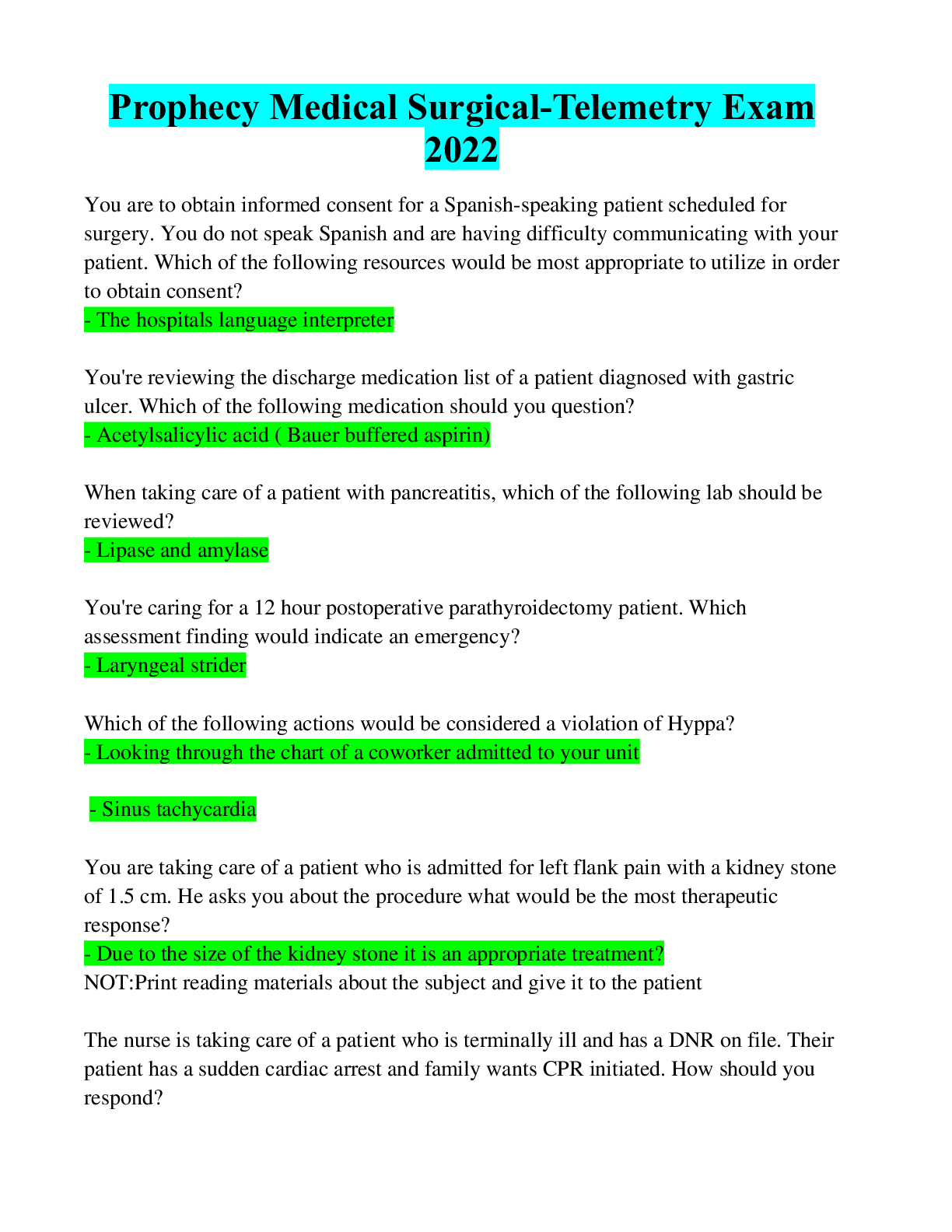


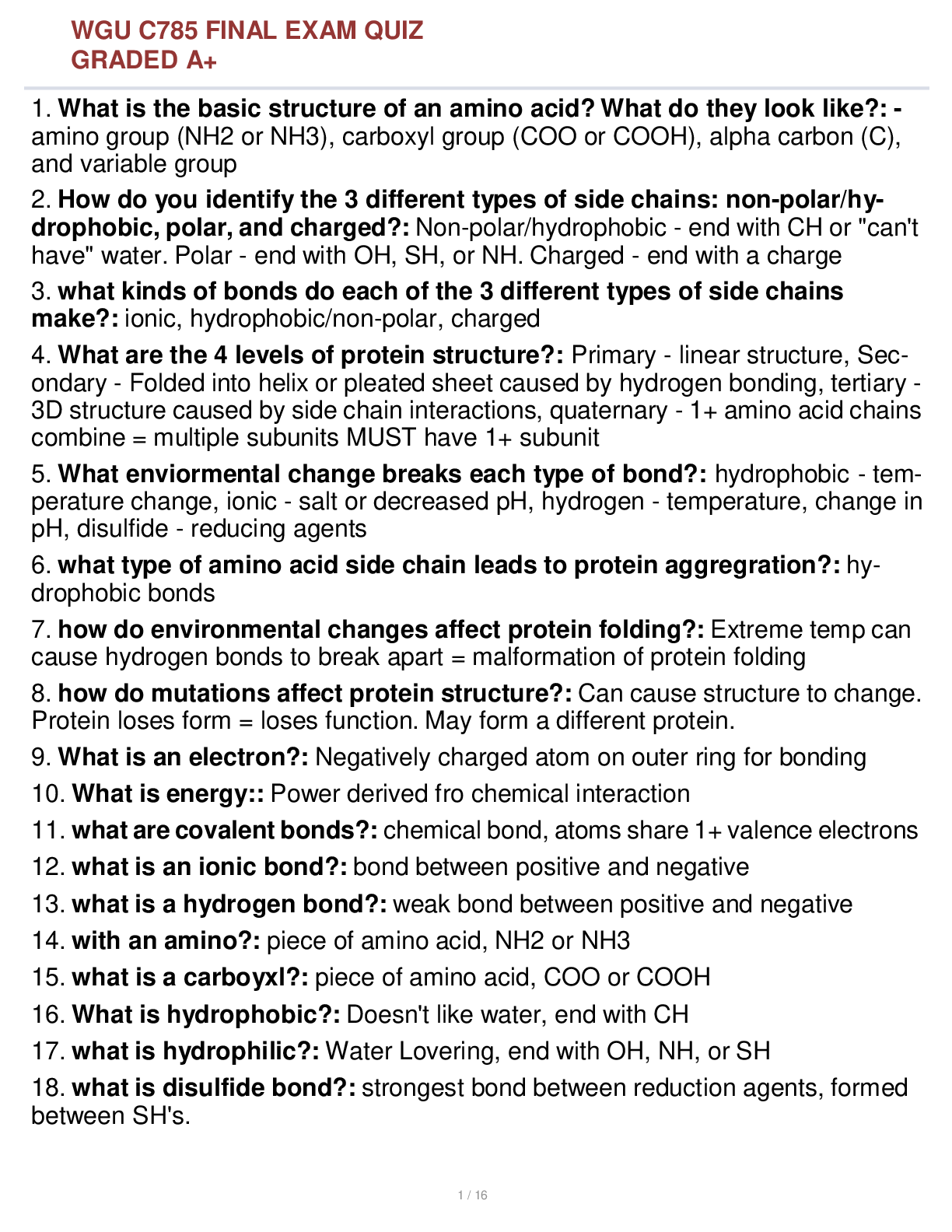
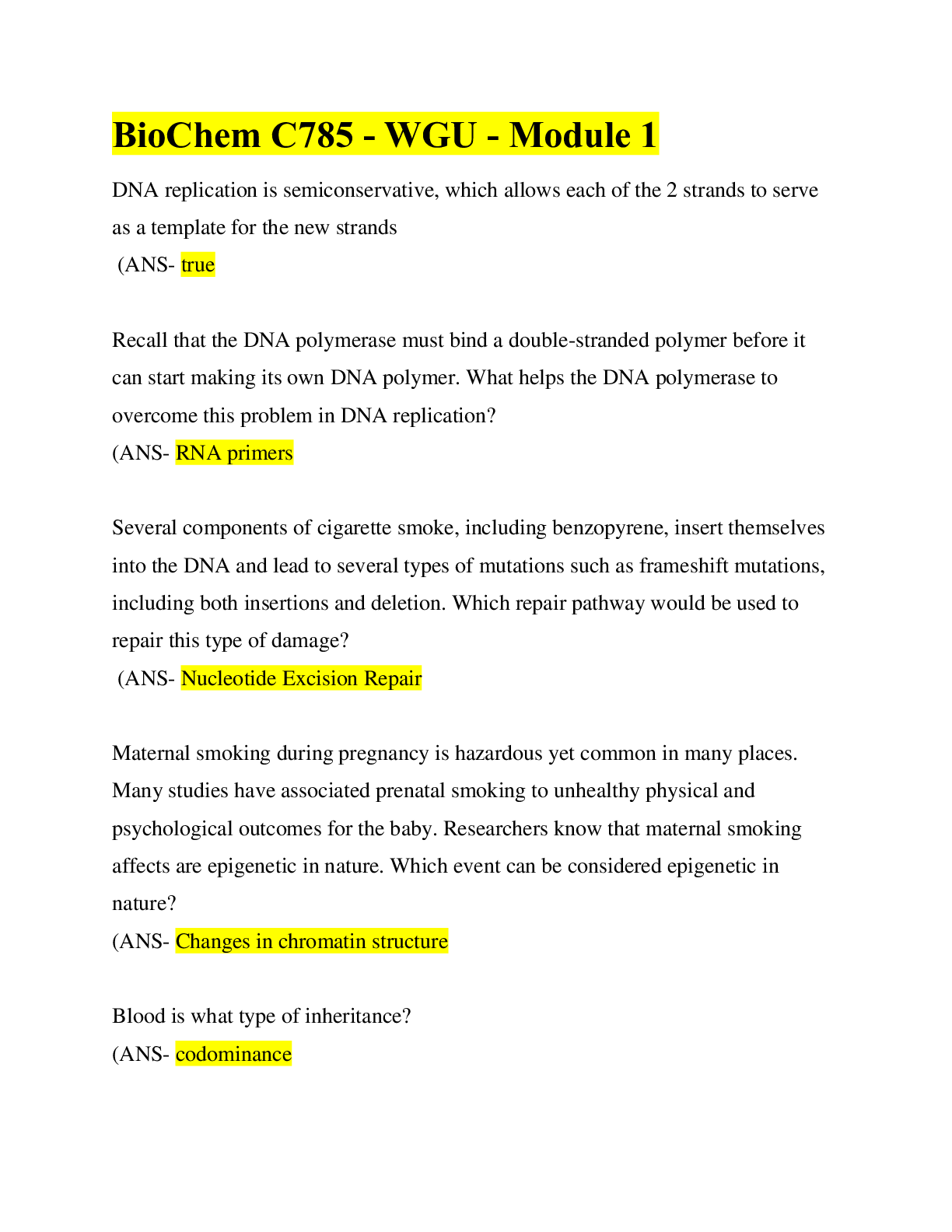
.png)

.png)

